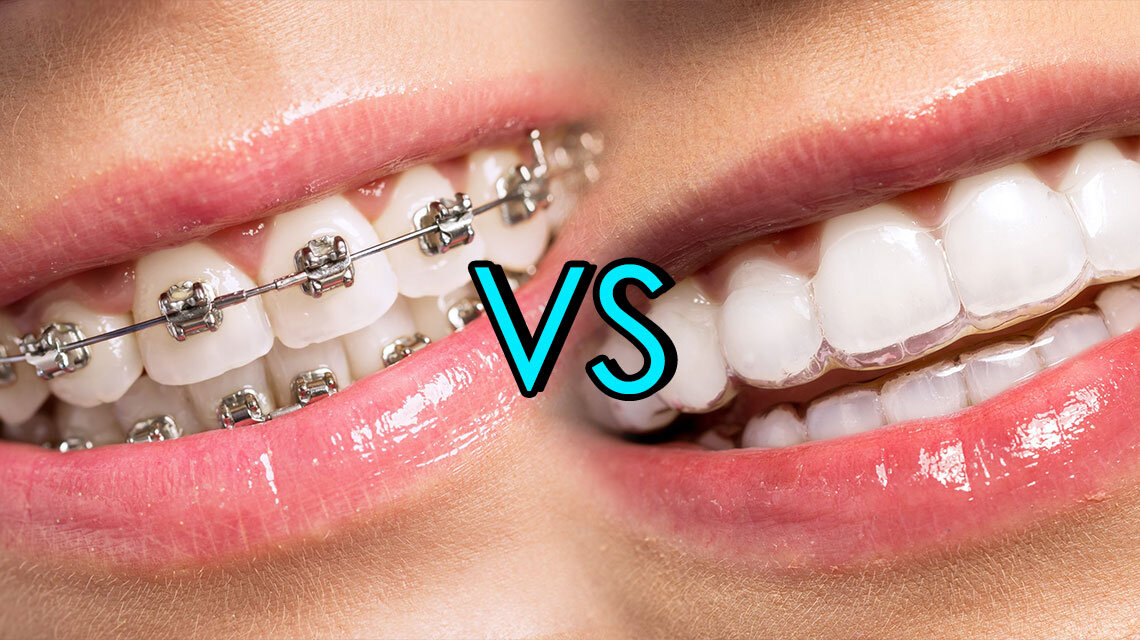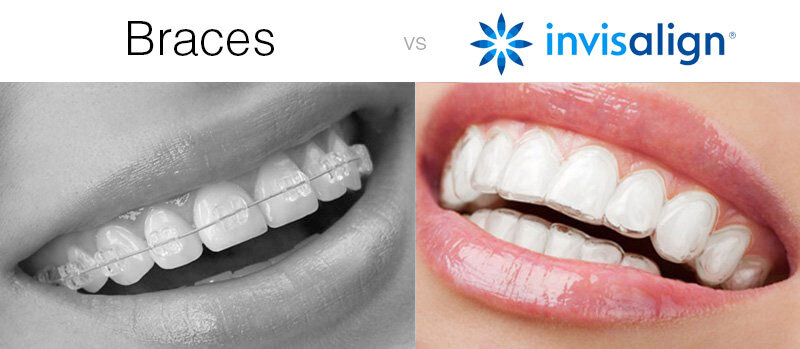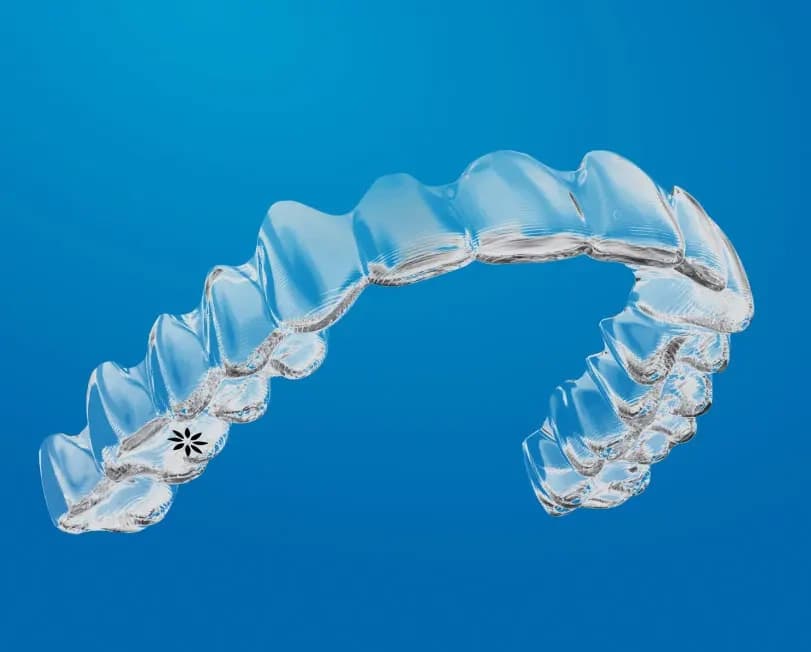Keeping Oral Health While Using Invisalign: Tips for a Smooth Experience
Keeping Oral Health While Using Invisalign: Tips for a Smooth Experience
Blog Article
Invisalign vs. Conventional Dental braces: Which Option Is Right for You?
When thinking about orthodontic treatment, the selection between Invisalign and conventional braces presents a number of crucial factors that warrant cautious assessment. Invisalign supplies a very discreet option with removable aligners, while typical dental braces provide a more noticeable yet reliable solution for severe imbalance.
Review of Therapy Options

In comparison, standard braces consist of steel braces and cables that are bound to the teeth. This method applies continuous stress with time to achieve alignment. While effective for complex orthodontic problems, standard dental braces call for regular sees for modifications and can posture challenges in maintaining oral hygiene due to the trouble of cleaning around braces and cables.
Both options have their benefits, and the choice typically rests on particular dental conditions, way of living preferences, and person compliance. Ultimately, seeking advice from an orthodontic professional is vital for figuring out the most appropriate treatment strategy tailored to specific demands. Comprehending the subtleties of each choice can considerably affect the general success of orthodontic treatment.
Aesthetic Factors To Consider
A significant factor affecting the option in between Invisalign and conventional braces is the aesthetic charm each therapy uses. Invisalign aligners are crafted from clear plastic, making them practically unnoticeable when used. This very discreet look is specifically appealing to teens and grownups who may feel uncomfortable regarding their orthodontic treatment. The ability to maintain an all-natural smile throughout the alignment process can significantly improve the client's self-confidence in social and professional setups.
In contrast, typical dental braces contain metal braces and wires, which can be extra noticeable. While advancements in orthodontic technology have caused the advancement of smaller sized brackets and colored elastics, conventional braces still maintain an even more obvious account. For some individuals, the exposure of braces may deter them from looking for required treatment.
Inevitably, the selection in between Invisalign and traditional dental braces may hinge on personal choices regarding looks. People that prioritize discernment typically lean towards Invisalign, while those who are less worried about presence might select standard dental braces. Comprehending the aesthetic effects of each choice is essential for making an educated choice that lines up with one's way of life and choices.
Comfort and Convenience

In regards to ease, Invisalign aligners are removable, making it possible for clients to appreciate their favored foods without restriction and maintain ideal oral hygiene. Cleaning and flossing are streamlined, as the aligners can be obtained during these regimens, whereas standard dental braces need mindful steering around braces and cables.
Furthermore, Invisalign's modern system enables less orthodontic visits. Clients usually receive multiple sets of aligners at the same time, which can enhance the therapy procedure and minimize time spent in the orthodontist's chair. On the other hand, traditional dental braces require regular changes, making them much less convenient for those with busy schedules. Invisalign. In general, the convenience and ease of Invisalign make it an appealing option for several individuals seeking orthodontic therapy.
Therapy Duration and Effectiveness
While both Invisalign and standard dental braces work in dealing with dental misalignments, the period of therapy can differ considerably in between both alternatives. Typically, Invisalign treatment this article can take anywhere from 12 to 18 months, relying on the intricacy of the case. The clear aligners function by progressively moving teeth into their desired positions, and normal follow-ups with an orthodontist aid guarantee progression continues to be on track.
On the other hand, standard dental braces frequently require a longer dedication, generally varying from 18 months to 3 years. This is due to their set nature and making use of wires and brackets, which can be more reliable for complex situations and serious misalignments (Invisalign). The therapy efficiency of standard braces is well-documented, as they permit for precise adjustments and greater control over tooth activity
Eventually, the choice in between Invisalign and traditional braces may rest on both the expected therapy duration and the specific oral issues handy. Consulting with an orthodontist is important, as they can supply tailored referrals based on individual demands, making sure the picked method aligns with desired outcomes and durations.
Price Contrast and Insurance Coverage Choices
Cost plays a substantial function in the decision-making process for people taking into consideration orthodontic therapy, whether opting for Invisalign or typical dental braces. On standard, the expense of Invisalign arrays from $3,000 to $8,000, while conventional braces normally cost in between $2,000 and $6,000. Elements influencing these prices include the complexity of the situation, the duration of treatment, internet and geographical area.
Lots of oral insurance coverage plans give partial coverage for orthodontic therapies, yet the specifics can differ widely. Normally, typical braces might be more frequently covered by insurance coverage strategies contrasted to Invisalign, which some insurance providers classify as an aesthetic procedure.
Furthermore, numerous orthodontic techniques offer flexible repayment strategies, making both therapy options extra available. Individuals ought to ask concerning potential financing options and discounts for in advance repayments. Reviewing the complete price, consisting of insurance advantages and layaway plan, is essential for making an informed choice that straightens with both visual choices and spending plan factors to consider.

Conclusion
In summary, the choice between Invisalign and traditional braces rests on multiple variables, consisting of visual choices, comfort, treatment duration, and cost. Invisalign offers a very discreet, detachable alternative that facilitates dental health and nutritional adaptability, while standard braces may be better for intricate oral problems and frequently come at a reduced rate point. Ultimately, assessment with an orthodontist is necessary to analyze specific scenarios and identify the most ideal treatment option for attaining optimum dental alignment.
When taking into consideration orthodontic treatment, the choice in between Invisalign and standard braces offers a number of essential elements that warrant careful examination.Comparing Invisalign and traditional dental braces reveals distinctive treatment alternatives for orthodontic modification.While both Invisalign and traditional dental braces are effective in dealing with dental imbalances, the duration of therapy can vary significantly between the two alternatives.Price plays a considerable role in the decision-making process for people thinking about orthodontic therapy, whether opting for Invisalign or traditional dental braces.In summary, the option in between Invisalign and conventional dental braces pivots on several variables, including aesthetic choices, convenience, treatment duration, and price.
Report this page